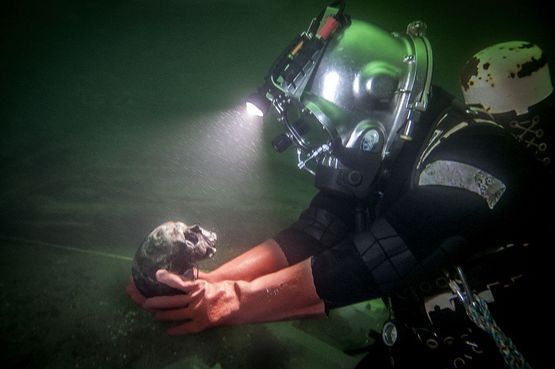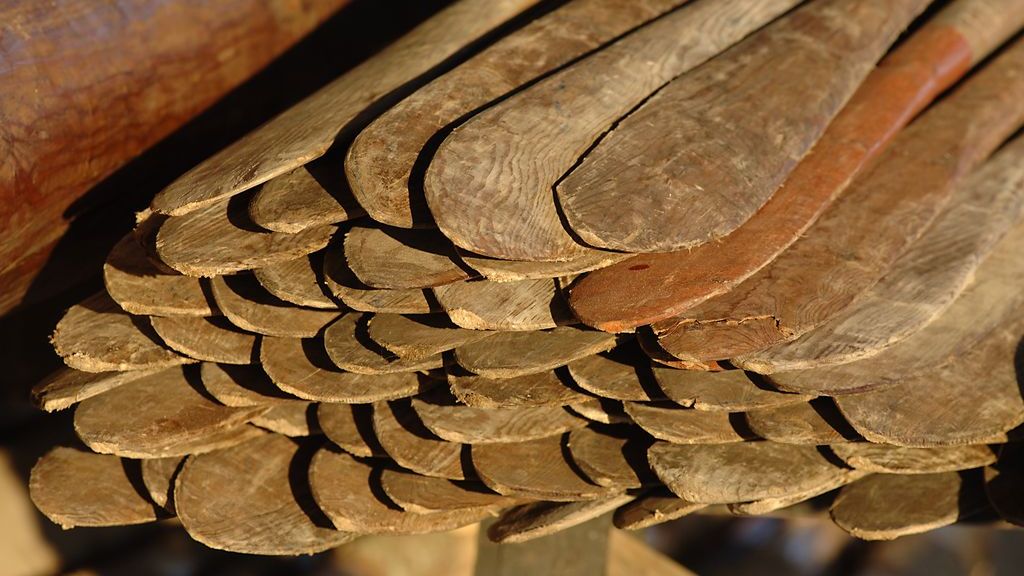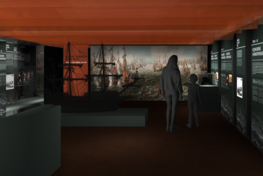From April 29th 2021 to March 1st 2022, the Viking Ship Museum shows the special exhibition, ‘In Smoke and Flames – the Battle in Fehmarn Belt, 1644’.
The exhibition follows the violent and bloody feud, which took place between Denmark and Sweden from 1643-45.
’In Smoke and Flames’ follows in the wake of the maritime archaeologists’ discovery of the Danish warships, Lindormen and Delmenhorst, and the Dutch vessel, Swarte Arent.
The exhibition presents the results of several years of maritime archaeological investigations, which have revealed the gruesome events that marked the beginning of the end of Denmark’s power in the Baltic.
Total humiliation
13th October 1644 – just a few short months after the fabled battle of Kolberger Heide, where King Christian, despite his missing eye, stood ‘by the high mast’ and entered the annals of history as a war hero – the Danish fleet suffers a stinging defeat.
The enemy is a superior Swedish-Dutch fleet.
When the gun smoke had cleared after the battle, the commander of the Danish fleet, Pors Mund, had not only lost his life, but also in total 15 out of the 17 Danish ships.
As the smoke from the guns dissipated, in Denmark, a veil was drawn over the events in Fehmarn Belt. The humiliation was all-encompassing.
The sea can’t remove every trace
In 2012 and 2020, Danish and German researchers from the Viking Ship Museum and Archäologisches Landesamt Schleswig‐Holstein conducted maritime archaeological investigations of the shipwrecks, prior to the construction of the Fehmarn tunnel.
For nearly 400 years, the sea has kept hidden the gruesome remains of melted bronze guns, shot-damaged ship parts, shot and grim traces of the dead.
Follow the story
The special exhibition takes visitors on a journey-through-time exploring the events before, during and after the battle.
From the political tension, that sparked the feud between the two age-old enemies, Demark and Sweden, to the events that followed in its wake, with foiled acts of terror, torture and significant political ramifications.
All the way up to today, where the discovery of the ships helps add new details to the history of Denmark.
Visual staging
A visual staging of an impressive painting of the battle, which depicts the ships’ final hours, supports the story. The animated painting reveals the events as they played out, complete with gun smoke and flames.
The three shipwrecks are now protected on the sea floor for posterity, but the maritime archaeologists’ detailed 3D models make it possible for visitors to see the ships as they were found at the bottom of the sea.
Together with an impressive ship model, artefacts recovered from the sunken ships and a canon raised from Swarte Arent, the exhibition invites visitors down into the deep.
Info about the exhibition:
The special exhibition ‘In Smoke and Flames – the Battle in Fehmarn Belt, 1644’ can be seen at the Viking Ship Museum in Roskilde from April 29th 2021 – March 1st 2022.
Artefacts are on loan from:
The National Museum of Denmark, Landesmuseum Schleswig-Holstein, Femern A/S and Køge Maritime Modelbyggerlaug.
The exhibition has been produced in collaboration with the design company, Yoke Aps.
The special exhibition is supported by:
Dronning Margrethes og Prins Henriks Fond, Beckett-Fonden, Brebølfonden, A/S D/S Orients Fond and Furi Appel og Gunnar Niskers Fond til Almennyttige Formål.
Parallel to the exhibition, runs a dissemination programme with an online artefact catalogue, lectures, essays and guided tours.
» Follow this link to read more about the exhibition on the Viking Ship Museum’s website




